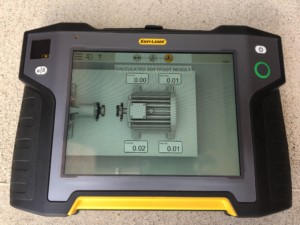
Asset Information is far more than just data, and it must be managed. We want to be informed, not distracted by our data. Our goal is to make “evidence-based decisions”. The “evidence” of what is going on can be very useful if it is accurate, timely, complete, and fit for its intended purpose. Increasingly, we are turning to our computers for that evidence. But do we find it? Or do we end up searching through data looking for that “needle in the haystack”? Do we spend our time making informed decisions, or seeking information from an increasingly large and confusing array of disorganized, out-of-date, inaccurate, and incomplete data? Data must be fit for purpose.
[Read more…]



 Imagine (or maybe you don’t have to) that you take out your brand new Easy-Laser system, and proceed to perform a shaft alignment. However, it seems that no matter what you do, you can’t get a great alignment. What is going on? The foundation looks good, new shims were used, the asset is clean, and there is no pipe strain. After some discussion with others, they mention a term in which you are unfamiliar with, soft foot.
Imagine (or maybe you don’t have to) that you take out your brand new Easy-Laser system, and proceed to perform a shaft alignment. However, it seems that no matter what you do, you can’t get a great alignment. What is going on? The foundation looks good, new shims were used, the asset is clean, and there is no pipe strain. After some discussion with others, they mention a term in which you are unfamiliar with, soft foot.




 As an Enterprise Maintenance Planner, you manage the backlog, provide a maintenance schedule, liaise with Maintenance and Operations, maintain excellent knowledge of the facility and its equipment, and find ways to optimize productivity. Phew! That’s no small to-do list.
As an Enterprise Maintenance Planner, you manage the backlog, provide a maintenance schedule, liaise with Maintenance and Operations, maintain excellent knowledge of the facility and its equipment, and find ways to optimize productivity. Phew! That’s no small to-do list.
